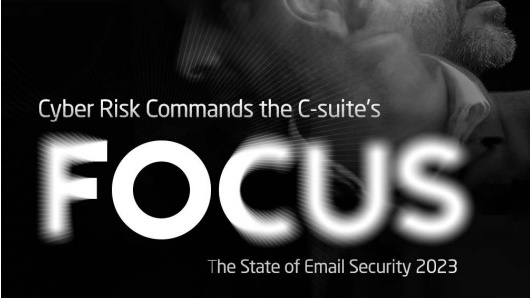Email still the top vector for attackers
Infection chains might change, but the initiation method remains the same


While more exotic forms of attack may make headlines, it turns out good old email is still the most popular vector of attack for malicious actors, according to research from HP Wolf Security, accounting for 79% of threats.
The figure is a single percentage point down from 2022’s figures but highlights issues facing email administrators. Web browser downloads also dropped by 1% to 12%, while other vectors, such as removable media, grew to 9%.
Researchers noted that while attack chains tended to be formulaic, there had been a move to threat actors connecting different components to create something more unique – and harder to detect.
According to researchers “32% of the QakBot infection chains analyzed by HP in Q2 were unique”.
QakBot spam activity surged in Q2 2023, with the malware distributors switching between many different file types to infect PCs.
Patrick Schläpfer, Senior Malware Analyst at HP Wolf Security, told ITPro that the team had seen continuous and rapid change across various attack vectors. He gave the example of the QakBot campaigns, which showed threat actors changing their initial vector as well as techniques within the infection chain.
RELATED RESOURCE

The state of email security 2023
Get the latest insights from 1,700 CISOs and other IT professionals as they share the steps they are taking to protect their organizations from email-based threats
He also noted the impact of Microsoft’s disabling of macros by default, which has forced a diversification of attack vectors. “During 2022, we observed attackers attempting various newer techniques such as HTML smuggling, PDF lures, and also OneNote documents – which is particularly interesting as OneNote attacks do not rely on macros,” he said
Get the ITPro daily newsletter
Sign up today and you will receive a free copy of our Future Focus 2025 report - the leading guidance on AI, cybersecurity and other IT challenges as per 700+ senior executives
Schläpfer noted that most attacks were wide-ranging rather than targeted as attackers attempted to gain a foothold in a system. He shared statistics with ITPro collected over the course of Q2 2023 that show over half (51.5%) of malicious email attachments were archives and almost a quarter (24.4%) were documents. PDFs accounted for 4.2% and executables 1.5%.
More on security
Attackers are also becoming more creative, according to the research. One recent campaign used multiple programming languages in an effort to avoid detection. The payload was encrypted using Go before switching to C++ in order to interact with the victim’s operating system before running .NET malware.
According to Schläpfer, attackers are becoming more knowledgeable about their target systems, making it easier to exploit gaps or vulnerabilities. He said: “By knowing which doors to push, they can navigate internal systems with ease, using relatively simple techniques in very effective ways – without sounding the alarm”.
With email remaining the top attack vector, the advice for administrators remains the same. Dr Ian Pratt, global head of security for personal systems at HP, commented that while attack chains might vary, the initiation methods tended to remain the same: “It inevitably comes down to the user clicking on something”.
“Instead of trying to second guess the infection chain, organizations should isolate and contain risky activities such as opening email attachments, clicking on links, and browser downloads.”

Richard Speed is an expert in databases, DevOps and IT regulations and governance. He was previously a Staff Writer for ITPro, CloudPro and ChannelPro, before going freelance. He first joined Future in 2023 having worked as a reporter for The Register. He has also attended numerous domestic and international events, including Microsoft's Build and Ignite conferences and both US and EU KubeCons.
Prior to joining The Register, he spent a number of years working in IT in the pharmaceutical and financial sectors.
-
 Global cybersecurity spending is set to rise 12% in 2025 – here are the industries ramping up investment
Global cybersecurity spending is set to rise 12% in 2025 – here are the industries ramping up investmentNews Global cybersecurity spending is expected to surge this year, fueled by escalating state-sponsored threats and the rise of generative AI, according to new analysis from IDC.
By Ross Kelly Published
-
 Google Cloud is leaning on all its strengths to support enterprise AI
Google Cloud is leaning on all its strengths to support enterprise AIAnalysis Google Cloud made a big statement at its annual conference last week, staking its claim as the go-to provider for enterprise AI adoption.
By Rory Bathgate Published
-
 Cyber attacks against UK firms dropped by 10% last year, but experts say don't get complacent
Cyber attacks against UK firms dropped by 10% last year, but experts say don't get complacentNews More than four-in-ten UK businesses were hit by a cyber attack last year, marking a decrease on the year prior – but security experts have warned enterprises to still remain vigilant.
By Emma Woollacott Published
-
 Hackers are targeting Ivanti VPN users again – here’s what you need to know
Hackers are targeting Ivanti VPN users again – here’s what you need to knowNews Ivanti has re-patched a security flaw in its Connect Secure VPN appliances that's been exploited by a China-linked espionage group since at least the middle of March.
By Emma Woollacott Published
-
 Broadcom issues urgent alert over three VMware zero-days
Broadcom issues urgent alert over three VMware zero-daysNews The firm says it has information to suggest all three are being exploited in the wild
By Solomon Klappholz Published
-
 Nakivo backup flaw still present on some systems months after firms’ ‘silent patch’, researchers claim
Nakivo backup flaw still present on some systems months after firms’ ‘silent patch’, researchers claimNews Over 200 vulnerable Nakivo backup instances have been identified months after the firm silently patched a security flaw.
By Solomon Klappholz Published
-
 Everything you need to know about the Microsoft Power Pages vulnerability
Everything you need to know about the Microsoft Power Pages vulnerabilityNews A severe Microsoft Power Pages vulnerability has been fixed after cyber criminals were found to have been exploiting unpatched systems in the wild.
By Solomon Klappholz Published
-
 Unlock profitability with Cove Data Protection
Unlock profitability with Cove Data ProtectionWhitepaper Agile risk management starts with a common language
By ITPro Published
-
 Ransomware missteps that can cost you
Ransomware missteps that can cost youWhitepaper Agile risk management starts with a common language
By ITPro Published
-
 The big book of selling data protection
The big book of selling data protectionWhitepaper Agile risk management starts with a common language
By ITPro Published
